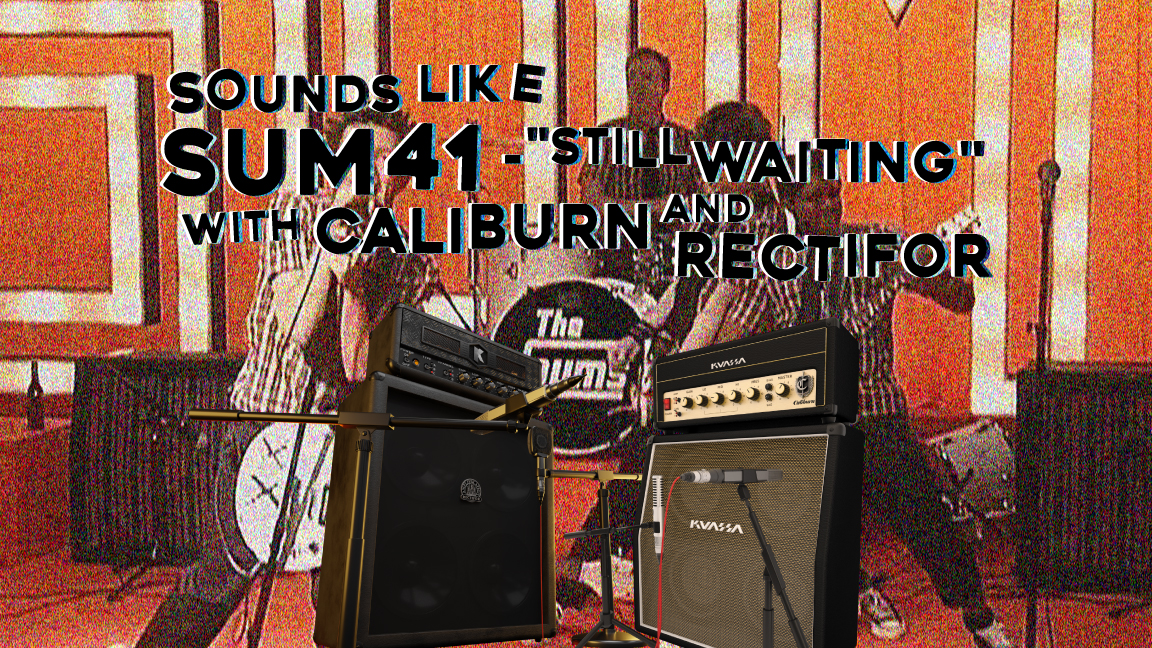To recreate the guitar tone of “Still Waiting” by Sum 41 using amp simulators, we can start by analyzing the recorded sound of the guitar in the song. The guitar tone in “Still Waiting” is heavily distorted and has a lot of gain, which gives it a raw and aggressive sound. The guitar also has a mid-range focus, which makes it cut through the mix and stand out.
These are exactly the words that no fan of the punk rock genre would want to hear. After 27 years, the awesome Canadian band Sum 41 announced splitting after their final album and world tour. What a loss to the music world and fans of the genre!
Face it, our crew is a “big fan” of these guys, and their moving music has made a lasting impression on our spirits. We are also inspired by them because we have been listening to them for so many years. We will undoubtedly be sad, but the music they left behind will inspire us to keep making fantastic goods that will help us discover the next Sum 41, who will rock the globe with fresh, original tunes.
For those who are not familiar with the band, the following introduction will be interesting to read. The year was 1996 and the place was Ajax, Ontario. Deryck Whibley on the guitar, the drummer Steve Jocz, the bassist Richard Roy and the vocalist Jon Marshall comprised this band back then. Going under two different names – “Kaspir” and “Supernova”, they eventually decided to call themselves Sum 41, while on tour and because it was the 41 day of their summer vacation. First two years of the newly formed band were not so exciting. They passed from cover band to their own music and many adjustments changes between them inside – who would be lead vocal, guitarist and so on.
View this post on Instagram
Like every other band of those times, they recorded a tape-cassette demo and sent it to different labels in order to get contracts. In 1999 they had success and thus their first EP was born. From that moment they started to release singles, videos and of course their first album called “All Killer No Filler” which came out in 2001. This album could be considered as a fresh air in the punk scene amongst other bands back then. The sharp and distinctive guitar sound along with the memorable vocal lines imprint in every mind and you can hum yourself long after hearing the songs. And if you have ever wondered if simple riffs in a song can be so effective, that album is your proof.
“Does This Look Infected” was released right after the next year- 2002. No wonder after the success of the first one. Ok, here is something funny. Listening to this one definitely gets me back to the younger years like a time machine. Perceptibly more mature than previous, the bass and the drums rocking, not to mention the guitar solos- they have really grown- when it comes to melody and sounding. The album is a true storm, poured over the audience.
“Chuck”– 2004 is the third album of “Sum 41”. Number 10 in US Billboards 200 and Number 2 in Canada’ s Chart makes this one the highest-charting album until that moment and sends them to the level of pop punk superstars fully deserved. We can hear more consistent sound and feeling of interweaving of more music styles and they fit just great. Kinda looks like an evolution to another band. It suits them though.
“Underclass Hero” – released in 2007. Here is the turn of the band that we all waited for secretly. They probably worked very hard for these songs, cause there’s no way you can’t hear this artistic approach they have put in. They made their music deeper, revealing more personal notes and energy at the same time.
Screaming Bloody Murder – 2011. There’s not much to say for this one. The band continues with their emotional songs and it is just a pleasure to listen to every new song.
“13 Voices” – 2016. Unlike their previous album, after five years the band decided to return to their roots in the beginning and the songs resembled the first album. Expressing a bunch of emotions, but this time with more musical complexity, it will definitely bring you back to the 90’s.
“Order in Decline” – 2019. The frontman of the band Deryck Whibley as producer here left such an energy that we can hear it with every track. Heavy rock with tight sound and great solos. Fantastic album bursted with aggression and dynamic. The band was totally at its best.
In honor to the band we decided to recreate one of their songs – “Still Waiting” with our products. Their guitarist Dave Baksh has used a number of different guitars and amplifiers over the years which gave us the freedom to listen to the sound, analyze it and to show you how important is the articulation and the performance of the person behind the guitar. The various effect pedals are just an addition to the already existing technical proficiency of Baksh’ s playing style. The rig itself is not enough. Number of different factors contribute to the specific sound and they are connected with the mood, the venue setup, the environment and so forth. But, we know Dave used Marshall amps and Mesa Boogie Rectifier Series Amplifiers. So, we will use our Amplifikation Caliburn and Amplifikation Rectifor Amp Simulators to recreate the song guitar tones.
“Still Waiting” is a song by Canadian rock band Sum 41. It was released in November 2002 as the lead single from the album Does This Look Infected?
Using amp simulators to recreate guitars is a simple process. Why? since the recorded data indicates a rather basic setup. With the help of a Marshall Amplifier and a Mesa, the left and right guitar tracks are each represented by two separate guitar tones that work in unison to form a massive, huge wall of guitars.
We utilized our Caliburn B Amp on the second channel since the song’s opening riff emphasizes the right side of the mix and has the bite of the 80s monster JCM 800. Remember: No further processing or boost pedals.

As you can see, with no insane EQ settings, the gain is adjusted to the ideal midway position to produce a clear, crunchy tone while maintaining “high gain,” and the tone is then sculpted using two separate CAB’s and two vintage microphones.

The Rectifor Amp Simulator, an excellent high gain machine, is used for the left channel guitar. The B Amp and the third high gain channel, together with dropped mids and lows to tighten up the flabbiness, pushed up highs, and presence, are just what this head needs to fatten up the JCM 800 and provide a uniform guitar sound.

Again, the guitar tone was adjusted using two different CABs and two vintage microphones.

Final words:
Sum 41 grabbed the attention of the listeners from the very first song and will be remembered with hundreds of tours and shows all over the world, nominations and awards, their charitable work and the tremendous help for children to get to medical care. It makes us sad to know they will be no more, but let’s agree with their will and give them our Farewell.
Here you can hear the tone. Audio Sample:
Here you can download the preset and copy it to your presets folder:
Link:
https://drive.google.com/file/d/1JOpS60fW0q7I3H8jgEUZM2pxf9jzwMII/view?usp=share_link
The preset file names for Rectifor and Caliburn looks like this: Rectifor – Sum41 – Still – Left Guitar.krfp Caliburn – Sum41 – Still – Right Guitar.kclp copy the files after extracting them from the zip file at:
Presets folder:
Windows:
C:\Users\[User Name]\Documents\Kuassa\Presets\AmplifikationRectifor
C:\Users\[User Name]\Documents\Kuassa\Presets\AmplifikationCaliburn
Mac:
/Users/[User Name]/Music/Kuassa/Presets/AmplifikationRectifor
/Users/[User Name]/Music/Kuassa/Presets/AmplifikationCaliburn


